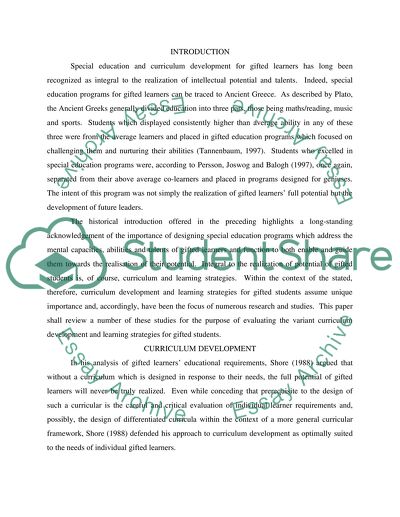Cite this document
(Curriculum Development Term Paper Example | Topics and Well Written Essays - 2250 words, n.d.)
Curriculum Development Term Paper Example | Topics and Well Written Essays - 2250 words. https://studentshare.org/education/1540441-curriculum-development-and-teaching-strategies-for-gifted-learners
Curriculum Development Term Paper Example | Topics and Well Written Essays - 2250 words. https://studentshare.org/education/1540441-curriculum-development-and-teaching-strategies-for-gifted-learners
(Curriculum Development Term Paper Example | Topics and Well Written Essays - 2250 Words)
Curriculum Development Term Paper Example | Topics and Well Written Essays - 2250 Words. https://studentshare.org/education/1540441-curriculum-development-and-teaching-strategies-for-gifted-learners.
Curriculum Development Term Paper Example | Topics and Well Written Essays - 2250 Words. https://studentshare.org/education/1540441-curriculum-development-and-teaching-strategies-for-gifted-learners.
“Curriculum Development Term Paper Example | Topics and Well Written Essays - 2250 Words”. https://studentshare.org/education/1540441-curriculum-development-and-teaching-strategies-for-gifted-learners.


